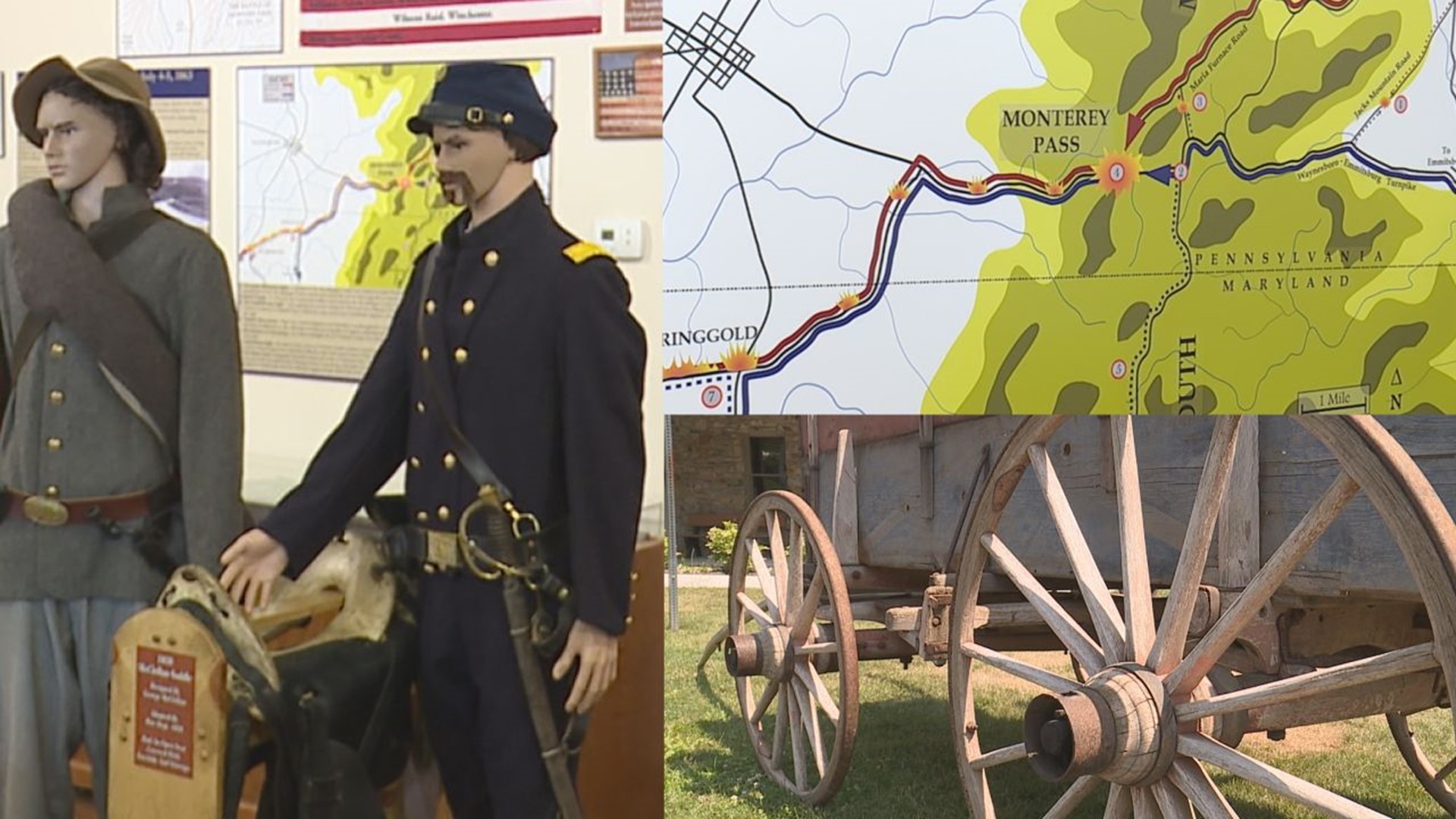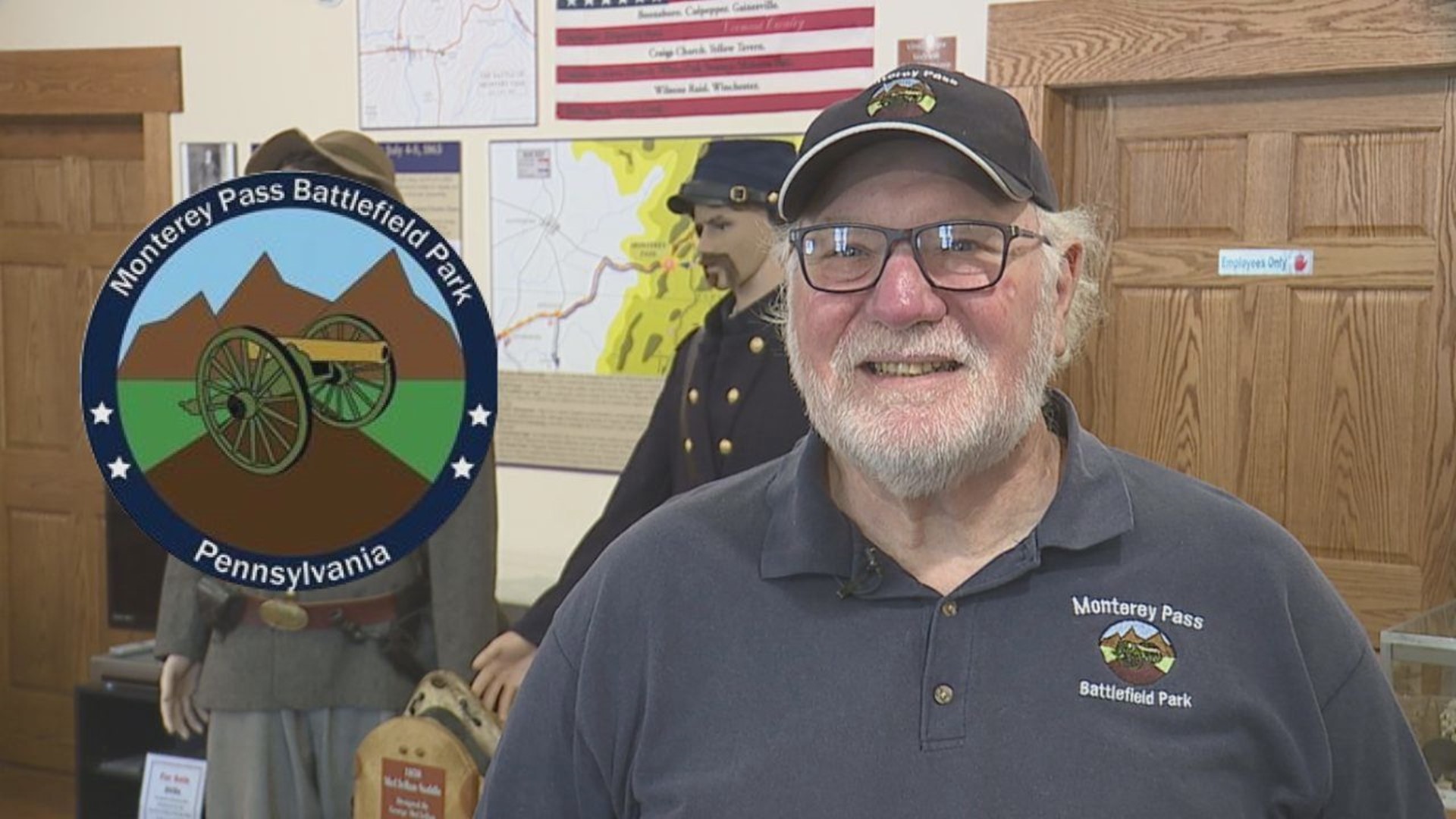FRANKLIN COUNTY, Pa. — As much as we've heard about the paths taken for both sides to arrive at Gettysburg, this battle was on the day after Pickett's Charge—ironically enough, Independence Day.
"It's probably the most difficult thing any General ever does, is extract a defeated army in enemy territory, back to safe haven," claimed Darwin Seiler.
The Confederacy took two paths to retreat below the Mason-Dixon Line. One of them was through Monterey Pass in Franklin County.
"Quartermaster General John Alexander Harmon was a large, profane man. People said that even the most scientific mule drivers weren't up to his standard of swearing," laughed Seiler. "But, there's a legend that Ewell sees him in Fairfield and says 'I want you to get this wagon train to Williamsport or I never want to see your face again.'"
The Rebels were not just retreating; they were moving miles of supply and ambulance wagons, as well as a reminder of why this war was being fought.
"Somewhere in the neighborhood of 5,000 sheep and cattle that had been appropriated and 200 to 300 African Americans that were being taken back into slavery," recalled Seiler.
Of course, they could only get back if the pass was open. A pair of names that played a role at the Battle of Hanover—Judson Kilpatrick and George Armstrong Custer—were looking to change that. The two sides were not only about to fight each other, but mother nature as well.
"I heard Ed Bearss talk a number of years ago, and he said the idea of fighting at night was relatively unheard of at that time," said Seiler. "Hand-to-hand combat at times. It's raining, it's thundering, and the only way they can identify is by the muzzle flashes and the lightning. There is a documented account of a Union soldier getting killed by stepping on a Confederate."
An extended interview with Darwin Seiler of the Monterey Pass Battlefield Park can be found in the video above.
The Michigan Cavalry's role at Monterey Pass was enough that there's an actual Michigan State marker in Pennsylvania.
"Early on, one of Custer's troops says that he looked more like a circus rider than a general by how he's dressed," Seiler said. "But if you read the diaries later on, they become very attached to him. Legend has it that he actually fell off his horse and a sergeant swooped in and saved him. Now, that's legend."
At one point, the moving battlefield moved into Maryland.
"It's the only battle fought on both sides of the Mason-Dixon Line. In terms of total mileage, from start to finish, it's the longest battle in the Civil War. It's fought in two states and four counties," stated Seiler. "So, everybody asks why we've never heard of it before; I'm guessing two states and four counties getting together might be part of the issue."
The Federals were able to destroy nine miles' worth of the Confederate wagons, but realizing they were now in enemy territory with no support, the Union troops made their way back to Pennsylvania.
"But, the bottom line is that the path remained open," said Seiler. "It maybe saved this local area of Pennsylvania from more devastation, maybe retribution, whatever, because it did hurry them on their way."
The pass remained open, where the Confederates continued their retreat until the last wagon rolled through on July 6.
"Robert E. Lee actually uses it at the end and ends up in Waynesboro," Seiler stated. "There's a great story where at Waynesboro's pump in the square and he and his men are watering the horses, and somebody comes out of an upstairs apartment and walks down to approach Lee and they all draw their sabers and their pistols. It was a gentleman who served under Lee in the Mexican War. They exchanged pleasantries and Lee goes on about his business. But, that's proof positive that Lee actually came through the gap."


